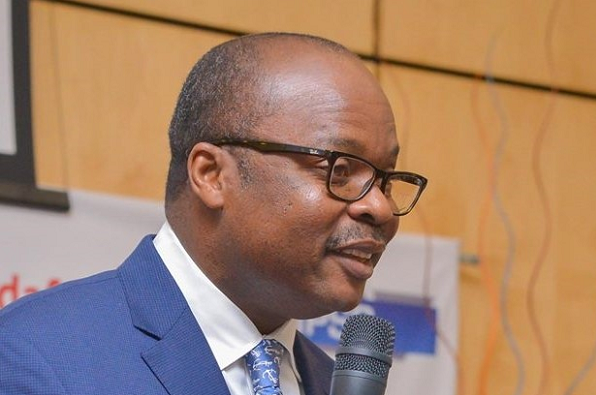
Maiden Monetary Policy Committee meeting: Analysts bet on rate-hold
Market analysts are optimistic that the Bank of Ghana’s Monetary Policy Committee (MPC) will stay its benchmark policy rate at 16 per cent for the first three months of the year when the seven-member committee concludes its first meeting for the year on January 31.
Their strong bet on a rate-hold in the first quarter of the year is anchored on their belief that the committee will aim to use the policy rate decision to consolidate the relative calm in the foreign exchange market enjoyed throughout this January while maintaining vigilance on the inflation front, where a rebased basket last September helped ease pressure on the annual Consumer Price Index (CPI).
Advertisement
In separate interviews with the Daily Graphic on January 28, Mr Courage Kwesi Boti, an analyst with Databank Limited, and Mr Jacob Brobbey, the Head of Trading at Barclays Bank Ghana Limited, said although the conditions were “ripe” for a rate cut, previous experiences had shown that cutting the rate in the first quarter would disrupt the calm and stability in the market.
Election year pressures
Mr Boti said the situation was even “trickier” this time round with the general election programmed for December 7 this year.
“We are in an election year and the sentiments are not the best,” he told the paper ahead of the MPC press conference on Friday, January 31, when its Chairman and Governor of BoG, Dr Ernest Addison, would announce the committee’s decision.
“In fact, until recent weeks, foreigners were staying completely off the market and they want to have a sense of policy certainty and an independence of monetary policy; they want to have a sense whether the central bank can guard the monetary policy regime towards the level they feel they are confident with.
“So given the risks that we have perceived – that potentially, currency could go out of gear, the fiscals could run out of gear too and all the other risks associated with the election year - I think the least the central bank can do is to just maintain the rate where it is in order to safeguard those sentiments,” he said.
Historic rate-hold
Throughout last year, the policy rate has been maintained at 16 per cent after a surprised 100 basis points (bps) cut in January 2019 prompted portfolio reversals in foreign debt holdings, then resulting in the cedi suffering a steep decline in its value against the world’s major trading currencies.
Thus, a decision to hold the rate today will make it the longest time running ever that the policy rate has been left unchanged.
Mr Brobbey of Barclays Bank explained that in spite of the need to maintain the policy rate in a bid to cautiously guard the stability in the inflation front and the foreign exchange market, a 25bps to a 50bps cut in rate “will not come as a surprise”.
When asked about the potential impact on portfolio reversals and the cedi depreciation, he said it was “the quantum of rate cut in 2019 (100bps) that spooked the market, hence the sell-off of Ghana’s assets by some offshore investors”.
“This year, we have seen significant improvement in offshore investor appetite for Ghana’s assets at current yields, and coupled with the measures put in place by the BoG (planned FX auction and regular market intervention) and the Eurobond issuance next week, we do not expect a repeat of last year's depreciation,” he added.
Lending rates not responsive
The policy rate accounts for 40 per cent of the basket of indices that are used to calculate the Ghana Reference Rate (GRR), a benchmark rate that banks now use to set their lending rates.
Data from the Ghana Association of Bankers (GAB) showed that within the period that the policy rate had been left unchanged at 16 per cent, the GRR had hovered between 16.61 per cent and 16.11 per cent.
An economist with the fiscal policy think-tank, the Institute for Fiscal Studies (IFS), Mr Leslie Dwight Mensah, said although the GRR was only a guide to banks in the determination of the cost of their funds to borrowers, “lending rates in particular have some catching up to do with the policy rate easing that we have seen since 2017”.
He blamed the slow response in lending rates to the monetary policy easing on the non-performing loan overhang, which he said had been “an obstacle to significant reductions in lending rates”.
“So, I guess, in the view of the central bank, further cuts in the policy rate were not necessarily going to bring down lending rates if there were other factors such as the huge load of NPLs slowing down the process of reduction in lending rates,” Mr Mensah said in a separate interview.
IMF on inflation
Meanwhile, the International Monetary Fund (IMF) has noted that the monetary stance is “appropriate” as inflation is “close to target and inflation expectations anchored”.
In its Article IV report released in December 2019, the fund, however, advised the MPC to remain cautious as inflationary pressures could re-emerge.
It noted further that a relatively tight stance could “help stabilise the exchange rate and reduce foreign exchange interventions”.




